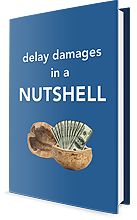What Should You Include In Construction Project Meeting Minutes?
What separates meeting minutes from the rest of the standard project documentation is that all the project stakeholders are expected to be present at these weekly meetings. Usually, the owner, the contractor, the design team, and maybe even the subcontractors are at these meetings.
The construction project meeting minutes or record produced from this meeting are assumed to be an accurate representation of the current status of the project and the execution plan for at least the coming week. Furthermore, because all the stakeholders are present, it is assumed that the information provided in these meeting minutes is agreed to by all parties. It is accurate, reliable, and thus the meeting minutes become a very important contemporaneous document. Because of the importance placed on meeting minutes, they must be complete, inclusive, accurate, and fact based.
Complete the construction project meeting minutes and record all topics discussed at the meeting, not just the standard headings such as safety, RFI’s, submittals, schedules and changes. These are important topics and they should be discussed weekly, but if the conversation diverges to discuss an issue with the concrete supplier whose concrete didn’t come up to strength or how weather impacted the site work or how a failed township inspection was impacting progress, these conversations must also be documented.
Sure, these issues may show up in other project documents like inspectors daily reports or the in the project correspondence, but where those reports might be one dimensional or one-sided, the meeting minutes should reflect all the views of all the parties, which leads us to another characteristic of good meeting minutes. They are inclusive. The meeting minutes must record each party’s views or comments on a topic, especially if there is a difference of opinions.
For instance, the contractor may state at the meeting that sketch SK1 is a design change and they cannot proceed without a change order. The architect may respond that sketch SK1 is a clarification sketch and only reflects the scope that was defined in the specifications. The owner or the owner’s rep may take it upon themselves to direct the contractor to proceed under a contract provision which allows him to do so unilaterally, making sure the project is not impacted, the schedule is not impacted, and giving the project team a little time to resolve this dispute.
Keep meeting minutes accurate and factual. Although I am sure we have seen meetings break down into heated arguments, the record need only reflect the facts and nothing but the facts. Meeting minutes should not include editorial or inflammatory comments.
Always read meeting minutes immediately upon receipt. This is important and, from my experience, an often ignored best practice. Do not rely on the other party, your peer, or anyone else to review the meeting minutes. Everyone who attended the meeting should review them and even those that didn’t attend the meeting minutes should review them.
Meeting minutes must be distributed to the entire team, not just those that attended. Typically, at the very first meeting the keeper of the minutes will request a distribution list from all the attending parties and that list should be kept current throughout the duration of the project. Meeting minutes should be updated and distributed timely. Often times the minutes are distributed with a clause that states the minutes are considered accurate unless revisions are requested within 2, 3 or maybe 5 days. Thus, the keeper of the minutes must get them out in time to be reviewed, commented on, and, if necessary, revised prior to the next meeting.
What happens when meeting minutes are not accurate or omit information? Well, generally, if left unchallenged, the inaccuracies and omissions in the meeting minutes become the permanent record. Even though an issue may be documented elsewhere, the inaccuracy or the omission in the meeting minutes may undermine the credibility of other documentation. At the very least, it creates confusion.
When you determine that a response to a meeting minute is warranted due to inaccurate information or an omission, be sure to inform the author in writing prior to the date by which you must respond. You may respond just to the keeper of the meeting minutes, although my recommendation is to respond to the entire distribution list, especially if you are attempting to correct an error. That way, your email or your response will be part of all parties’ project files.
If using a paper file, after responding, staple your response to the meeting minutes and file. If you are keeping electronic files, convert your response to a PDF and make it part of the meeting minute file.
Whatever your filing system is, you want to make sure that your response becomes part of your project files and is directly linked to that meeting. If your response was not acknowledged by the keeper of the minutes or by the project team, make a point to discuss it at the next meeting and ask that your comments be recorded.
In the event that the inaccuracy or the omission is egregious, insist that corrected meeting minutes be issued. There is no guarantee that revised meeting minutes will be issued, but your request will be on record noting the deficiency in the minutes and that this deficiency was serious.
Scott Lowe is a Principal of TRAUNER and is an expert in the areas of critical path method scheduling, construction claim preparation and evaluation, and specification writing. He can be reached at scott.lowe@traunerconsulting.com.
If you liked this article, be sure to sign up on the left side of our website to receive our Ideas & Insights in your email. Be sure to check your email after signing up!

